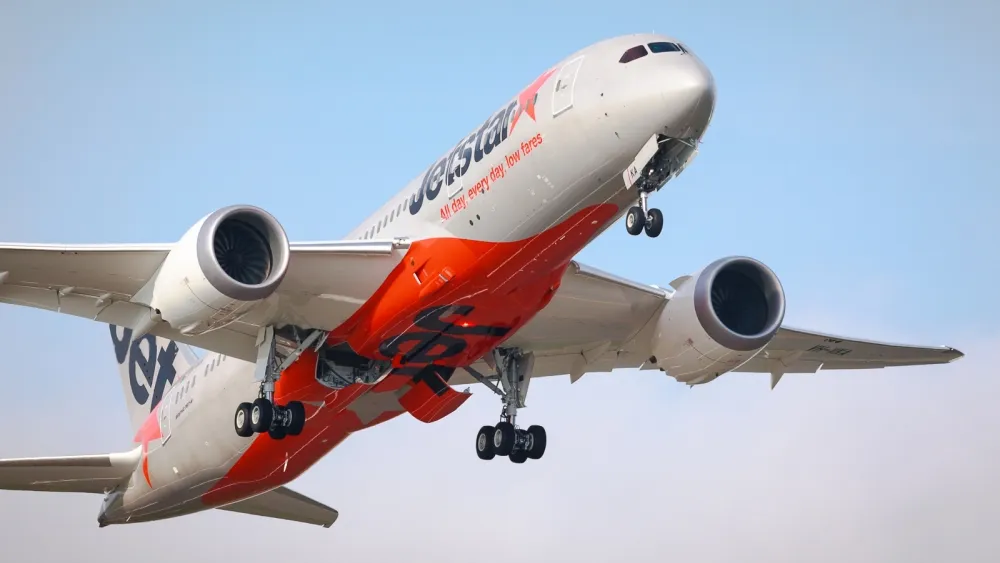
Calls To Split Qantas & Jetstar Are Nonsense
Sep 09, 2024

Calls to split Qantas and Jetstar reflect a misunderstanding of the airline industry's dynamics. These two entities operate under a single corporate umbrella, allowing for operational efficiencies and cost savings that ultimately benefit consumers. The synergy between the premium Qantas brand and the budget-friendly Jetstar enables them to cater to diverse market segments effectively. Splitting them could lead to increased operational costs and reduced competition, ultimately harming travelers. Instead of fragmentation, fostering collaboration within the group can enhance service offerings and improve overall customer experience, ensuring that both brands thrive in a competitive environment.
In recent discussions surrounding the Australian aviation sector, there have been growing calls to split Qantas and its low-cost subsidiary, Jetstar. Proponents of this idea argue that such a move would enhance competition and improve service quality for customers. However, these arguments, upon closer examination, reveal themselves to be more "nonsense" than sound reasoning. Let's delve into why these calls lack merit and how the current structure benefits the aviation market in Australia.
The Current Structure: A Winning Combination
Qantas and Jetstar operate under the same corporate umbrella, allowing for efficiency and synergy that would be lost in a split. This structure enables Qantas to offer a "full-service travel experience" while Jetstar caters to the "budget-conscious traveler". By maintaining this dual-brand strategy, the airlines can target different segments of the market without duplicating resources.
Consider the following table that outlines the key differences between Qantas and Jetstar:
| Feature | Qantas | Jetstar |
|---|---|---|
| Service Type | Full-service | Low-cost |
| In-flight Amenities | Meals, Entertainment | Buy on Board |
| Frequent Flyer Program | Yes | No |
| Target Market | Business Travelers | Leisure Travelers |
This comparison illustrates how both airlines effectively serve their respective markets. By working together, Qantas and Jetstar can optimize operational efficiencies and share resources, which ultimately benefits consumers through competitive pricing.
Competition and Pricing
A common argument for splitting the two airlines is that it would lead to increased competition in the aviation market. However, evidence suggests that the presence of Jetstar as a low-cost carrier actually drives down prices across the board. When Jetstar operates on a route, Qantas often adjusts its pricing strategy to remain competitive. This dynamic is crucial for the overall health of the airline industry in Australia.
To highlight this, consider the following chart that displays average ticket prices for routes served by both airlines:
| Route | Qantas Average Price | Jetstar Average Price |
|---|---|---|
| Sydney to Melbourne | $200 | $120 |
| Brisbane to Sydney | $180 | $110 |
| Melbourne to Perth | $300 | $200 |
This data indicates that Jetstar's presence on these routes not only provides options for budget travelers but also compels Qantas to offer competitive fares. The result is a more vibrant aviation market where consumers can choose between different service levels and price points.
Operational Efficiency
Maintaining a unified operation allows Qantas and Jetstar to streamline their logistics and reduce costs. A split would necessitate separate management teams, marketing strategies, and operational frameworks for each airline, leading to "increased overhead costs". These additional expenses could ultimately be passed on to consumers in the form of higher ticket prices, negating the very competition that advocates for a split hope to achieve.
Furthermore, by sharing resources such as maintenance facilities and ground staff, both airlines can optimize their operations. This collaboration results in "better utilization of assets" and a more responsive service model that can adjust to market demands swiftly.
The Impact on Customers
Ultimately, the calls to split Qantas and Jetstar overlook the substantial benefits that the current structure provides to customers. By operating under the same umbrella, the airlines can leverage their respective strengths, create competitive pricing, and offer a variety of travel options. The notion that a split would somehow enhance consumer choice is misguided and does not take into account the complexities of the aviation market.
Moreover, the "frequent flyer programs" available through Qantas provide added value for loyal customers, allowing them to earn points across both airlines. A separation would likely complicate these programs, diminishing the benefits for travelers who prefer to accumulate points for future travel.
Conclusion: A Unified Approach is Best
In conclusion, the calls to split Qantas and Jetstar are unfounded and fail to recognize the advantages of their current operational model. By maintaining a unified approach, these airlines can continue to deliver competitive pricing, efficient service, and a broad range of travel options to Australian consumers. Rather than pursuing a split, stakeholders should focus on enhancing collaboration between the two brands to further improve the overall aviation experience in Australia.
Related Articles

Explore Thailand: The Best Islands to Visit for Paradise, Adventure, and Relaxation

The Ultimate Guide to the Best Islands in Thailand for Your Next Getaway

Do babies need passports? How to get a passport for a newborn

How to get a U.S. passport fast: here’s how to expedite the process

What is Mobile Passport Control: 5 reasons why you should use it

SENTRI vs. Global Entry: A detailed guide

Do you need a passport to go to the Bahamas? Let’s find out

Do you need a passport to go to Mexico? A detailed guide

Do you need a passport to go to Canada? We got the answer

Do You Need a Passport for a Cruise: An Essential Travel Guide

Booster Seat Requirements: All the Rules to Follow in Your Rental Car

What Are the World’s Most Powerful Passports, and How Does Yours Rank?

How to Take a Passport Photo at Home: A Helpful Guide

You've got to have heart! Southwest's new livery

Your opinion: Should water be free on low cost carriers?

Young women bolder than guys as solo travellers
